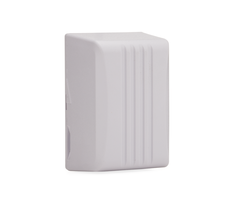Alarm Grid Video Recap: August 12th
Posted By Michael GorisIt's time for another video recap! There are eight (8) new videos this week, all featuring yours truly. We spent a lot of time working on the 2GIG GC2e again. We also covered the process for backdooring the Honeywell LYNX Touch Panels, and we touched on the IQ2+. Let's check out the videos!

Pairing a Z-Wave Device with the 2GIG GC2e
I show you how to pair a Z-Wave device with a 2GIG GC2e Security System. The 2GIG GC2e serves as a Z-Wave Plus controller, which allows you to pair smart home automation devices with the system. Devices can be controlled locally at the panel, as well as remotely from Alarm.com if the system is monitored. There are many types of Z-Wave devices you can use with the GC2e, including lights, door locks, smart thermostats, and more!
Programming a Wireless Zone On a 2GIG GC2e
I show you how to program a wireless zone for a 2GIG GC2e Alarm System. Every sensor used with the 2GIG GC2e will take up at least one zone. The GC2e System has sixty (60) wireless zones available. You can pair sensors from the Honeywell 5800 Series, the 2GIG 345 MHz Series, and the 2GIG eSeries Lineup. We recommend auto-enrolling any new sensor to prevent entering an incorrect Serial Number. Auto-enrolling will also confirm successful communication.
Programming a Key Fob for a 2GIG GC2e
I show you how to program a key fob for a 2GIG GC2e Alarm Panel. A key fob is a small, handheld device that you can use to arm and disarm your system. You can very easily carry around a key fob in your pocket or purse, and they are great for putting on key rings. Popular key fob options for the 2GIG GC2e System include the 2GIG KEY2-345, the 2GIG KEY2e-345, and the Honeywell 5834-4.
Adding & Changing User Codes On a 2GIG GC2e
I show you how to add and change user codes on a 2GIG GC3 Security Panel. The GC2e has (64) user code slots available. You need a valid user code to successfully disarm the system. It is recommended that everyone who uses the system regularly has their own user code so that you can keep track of who uses the system. You can also apply a schedule to a code so that it only works at certain times.
Using the Backdoor to Enter Programming On a Honeywell L5200 or L5210
I show you how to use the backdoor method on a Honeywell L5200 or L5210. The backdoor method involves rebooting the panel and then performing a special sequence of commands as the system reloads. By completing this process, you can get into programming if you were previously locked out. Please note that the backdooring process will not work if the system is currently in an armed state. You will need to disarm the system before you can backdoor.
Getting Back Into Programming On an L7000 If You're Locked Out
I show you how to get into programming on a Honeywell L7000 if you're locked out by using the backdoor method. There are two (2) main reasons why you would become locked out of programming. The first is that the option "NO" was selected at the prompt asking if the installer should be allowed to re-enter programming. Always choose "YES" when exiting programming. The other possibility is that you do not know the Installer Code for the system. Do not change the Installer Code from its default of 4112 to avoid being locked out.
Secure Arming On the Qolsys IQ Panel 2 Plus
I demonstrate the Secure Arming feature on the Qolsys IQ Panel 2 Plus. When Secure Arming is enabled, you must enter a valid user code or the Master Code when arming the system. Normally, the system can be armed without providing a code. Additionally, you must also provide a code if you go to cancel an arming session during the Exit Delay countdown if this feature is enabled. Many parents with small children enable the feature to prevent the system from being armed accidentally.
IQ Panel 2 Exit Delay Increased After Opening Door
I explain why the Exit Delay timer on the Qolsys IQ Panel 2 Plus will automatically increase after opening a door. This is due to a false alarm prevention feature called Auto Exit Time Extension. This feature is activated if two (2) Entry/Exit faults are detected during the Exit Delay countdown. When you fault the first E/E Zone after arming, the system assumes that you have left the building. Then when another E/E fault is detected, the system assumes that you have returned. It then gives you an added 60 seconds to exit the building. If you quickly re-entered the premises because you forgot something, this prevents you from having to disarm and then re-arm the system.







